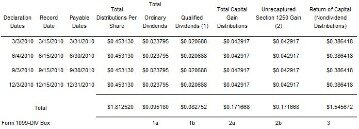Contents:


If the auditor’s report highlights any issues, you should work to correct them as soon as possible. As an example, the state of California requires annual audits for all nonprofit organizations in the state that have a gross income of $2 million or more. The revenue thresholds differ depending on the state, so be sure to check out this state chart to see what the audit requirements are in your state.

Check stubs or copies of reimbursement checks should be retained along with authorization forms, reimbursement requests, and receipts. If an organization fails to maintain adequate documentation to demonstrate that the reimbursement was for legitimate organizational expenses, the reimbursement could potentially be treated as a form of prohibited inurement or taxable income to the recipient. All disbursements, whether made by check, positive pay, or an e-pay system, should be approved by someone other than the person who physically makes the payment. The approver should confirm that the payment is supported by an appropriate check request, invoice and/or purchase order, that the same invoice is not paid more than once, and that the stated amount of goods or services were truly received by the organization.
The guide includes all of the guidance and practice aids you need to help you perform your nonprofit organization audits, compilations, reviews, and Single Audits efficiently while still meeting professional standards. Accounting practices are the backbone of any organisation, and reviewing these practices is the backbone of the audit process. This is the first checkpoint nonprofits need to mark to ensure all their accounting practices are ethical and in place. The internally appointed leaders can also commit fraud, so most organisations trust and hire the top audit firms in Dubai and let the professionals take charge of the procedure. The federal government has several requirements for when a nonprofit must arrange an independent audit.
Download the free PDF of our nonprofit audit checklist to share with your team!👇
This page explains the IRS audit process for charities and other nonprofit organizations. The National Council of Nonprofits has created aNonprofit Audit Guideto provide charitable nonprofits with the tools they need to make informed decisions about independent audits. An audit for nonprofit organization involves examining the organization’s financial records to make sure they are complying with the requirements of a tax-exempt entity. If the auditor finds that these requirements are not being met, the organization will most likely lose its nonprofit status. Audits are not always necessary, but they may be required by law or contract. Nonprofit Organizations may need an audit to fulfill a legal requirement or as part of a contractual agreement.

Auditors may wish to examine operations in the current fiscal year and disrupted operations in the prior fiscal year. There may also be a particular emphasis on auditing more varied funding sources in the current year. As updates go into effect for both lease accounting standards and reporting standards for gifts-in-kind, these areas may become an area of focus during an audit. Be sure to make appropriate transitions to meet the new standards if you haven’t already done so. Capital Business Solutions provides accounting software for nonprofits, government agencies and other municipal entities. Our accounting software can help your organization streamline and strengthen your internal accounting procedures, allowing you to focus on what matters most – your mission.
Step 3: Post-audit adjustments & reviewing the report
Operational audits assess your organization’s operation systems, productivity, staffing, IT, HR, and other functions. This type of nonprofit audit can provide insight into why your organization is hitting or missing your goals and how to create a more efficient and effective organization. The organization’s bank statements should be reconciled on a monthly basis by someone who does not issue or sign checks on behalf of the organization. In addition, copies of checks, wire transfer information, and other information relating to deposits and withdrawals should be maintained along with the monthly statement. Checks and other expenditures should be examined to verify that the payments are consistent with the organization’s activities and that the expenditures were appropriate. Similarly, deposit activity should also be reviewed to ensure that it corresponds to expected revenues.
Special Election Guide: L.A. Council District 6 – California City News
Special Election Guide: L.A. Council District 6.
Posted: Mon, 27 Mar 2023 07:00:00 GMT [source]
That’s why our in-house team of 6 former nonprofit auditors helped put together this guide to nonprofit audit checklist to make sure your audit goes as smoothly as possible. New federal awards in the current year may require a “Single Audit.” A Single Audit is a compliance-based audit that must be completed by any entity or organization that expends $750,000 or more in federal funds in one year. So, new federal awards such as COVID-related funds and Shuttered Venue Operators Grant may have put your NFP organization in this category.
Corrective action should be initiated within six months after receipt of the audit report and proceed as rapidly as possible. Auditees shall keep one copy of the data collection form described in paragraph of this section and one copy of the reporting package described in paragraph of this section on file for three years from the date of submission to the Federal clearinghouse designated by OMB. Pass-through entities shall keep subrecipients’ submissions on file for three years from date of receipt. A statement as to whether the audit disclosed any noncompliance which is material to the financial statements of the auditee. Exemption when Federal awards expended are less than $300,000 ($500,000 for fiscal years ending after December 31, 2003).
Are You Ready To Outsource Your Accounting?
Identify Federal awards made by informing each subrecipient of CFDA title and number, award name and number, award year, if the award is R&D, and name of Federal agency. When some of this information is not available, the pass-through entity shall provide the best information available to describe the Federal award. The name of the cognizant or oversight agency for audit determined in accordance with §___.400 and §___.400, respectively. Whether the auditee has either a cognizant or oversight agency for audit. Include, in either the schedule or a note to the schedule, the value of the Federal awards expended in the form of non-cash assistance, the amount of insurance in effect during the year, and loans or loan guarantees outstanding at year end. While not required, it is preferable to present this information in the schedule.
A material weakness is a significant deficiency, or combination of significant deficiencies, that results in more than a remote likelihood that a material misstatement of the financial statements will not be prevented or detected. Disclaimer of Opinion – Shows auditors found material misstatements. Qualified Opinion – Shows the auditors found one or two situations where the organization is not following GAAP.

Cash transactions should be recorded into a journal or log to enable account reconciliation. It is important that any cash revenues be deposited to the organization’s bank account as soon as possible, and that management verifies that the amount deposited matches the amount collected. The phase of a Federal program in its life cycle at the auditee may indicate risk. For example, during the first and last years that an auditee participates in a Federal program, the risk may be higher due to start-up or closeout of program activities and staff. Federal agencies, with the concurrence of OMB, may identify Federal programs which are higher risk. OMB plans to provide this identification in the compliance supplement.
Auditors must also provide a detailed report outlining all findings and recommendations so that nonprofits can take appropriate action to address any issues uncovered during the audit process. This allows organizations to remain compliant while also giving donors greater assurance that their funds are being used properly and in accordance with stated goals and objectives. A deficiency in designexists when a control necessary to meet the control objectives is missing, or an existing control is not properly designed so that even if it operates as designed, the control objective is not always met.
Nonprofit Standard Newsletter – Spring 2023
Access to working papers includes the right of Federal agencies to obtain copies of working papers, as is reasonable and necessary. Each audit finding in the schedule of findings and questioned costs shall include a reference number to allow for easy referencing of the audit findings during follow-up. Monitor the activities of subrecipients as necessary to ensure that Federal awards are used for authorized purposes in compliance with laws, regulations, and the provisions of contracts or grant agreements and that performance goals are achieved.
This way, you’re not reporting an arbitrary 20% of labor cost allocation to a certain program, you can actually demonstrate that 20% labor cost allocation by showing the historical evidence of how each of your employees spent their time. When running a nonprofit, there are a few requirements your organization needs to meet in order to stay compliant with federal and state rules and regulations to maintain your 501 status. Requirements for the submission of audits or reviews are based on the gross support and revenue of the organization for the fiscal year covered by the filing. Effective cost allocation strategies are essential to organizations’ understanding of how their resources are deployed.
If you’re not available, the auditors can’t do their jobs and may even suspect that there’s something you don’t want them to find. The planning meeting happens before the audit; it’s how everything gets started. The purpose is to discuss items that have or may have audit significance and set a timeline for the audit. Expect the auditor to explain the timeline clearly and identify the items of audit significance with no ambiguity. By the end of the planning meeting, you should know which items are required and when they must be made available to the auditor.
Rather, it’s an opportunity to learn about how your organization can continue to improve its processes. These improvements may be simple actions that amplify to create a major impact, or they may be more complex changes that will take hard work and focus. After your nonprofit audit is complete, the auditor will create a “letter to management,” also known as the “management letter” which outlines the recommendations the auditor has for the organization to incorporate into their activities and processes. The timing of your nonprofit audit heavily depends on the requirements of the organization to which you’re submitting the results.
Compile all relevant contracts, agreements and records pertaining to employee salary and benefits packages along with donor information, if applicable. All this paperwork needs to be organized neatly in preparation prior to handing over everything to the auditor who will review every document carefully before beginning their work. Even if you think you’re doing everything right, it can still be worth conducting a nonprofit audit. Why a nonprofit might conduct an audit even when the law doesn’t require it. Some financial institutions allow organizations to set and adjust strict limits on usage of electronic payment methods and to send automated notifications to reviewers in the event of any attempted or actual misuse.
- The Financial Accounting Standards Board principles require auditors to issue a report to the board of directors, presenting a professional opinion about the nonprofit’s financial practices.
- For example, Federal programs that disburse funds through third party contracts or have eligibility criteria may be of higher risk.
- Nonprofits who may not be required to conduct an audit may still consider doing so in order to make sure their financial records and internal controls are up-to-par and to find potential opportunities for improvement.
Since this part does not apply to for-profit subrecipients, the pass-through entity is responsible for establishing requirements, as necessary, to ensure compliance by for-profit subrecipients. The contract with the for-profit subrecipient should describe applicable compliance requirements and the for-profit subrecipient’s compliance responsibility. Methods to ensure compliance for Federal awards made to for-profit subrecipients may include pre-award audits, monitoring during the contract, and post-award audits. Federal award means Federal financial assistance and Federal cost-reimbursement contracts that non-Federal entities receive directly from Federal awarding agencies or indirectly from pass-through entities. It does not include procurement contracts, under grants or contracts, used to buy goods or services from vendors. Any audits of such vendors shall be covered by the terms and conditions of the contract.
There is a growing trend for smaller nonprofits to have “remote audits” where the auditors conduct the audit without a site visit. The auditor will also look at the nonprofit’s financial statements from previous years, if they are available. Auditors will also review the organization’s policies and procedures, including its operations and management. They will look at any documentation provided by the nonprofit to ensure that it is accurate and complete.
Saw his comments on the website, the financial statements should be a pleasant process. Indeed the process of working with Ernest was a very pleasant, and we would like to continue using his service. This article will delve into common pitfalls around performing subrecipient risk assessments and monitoring, and the best practices for organizations looking to improve their processes in these areas. There are numerous resources available that guide those charged with governance toward building programs to include anti-fraud controls and cultivation of anti-fraud environments. Currently, there is debate over the division of responsibilities between the board of directors and other committees of the board e.g., audit, compensation, finance and nominating committees , specifically with respect to risk oversight. Before we get into the “WHOs” of the Audit Committee in particular, it is important to ensure that your organization recognizes the key participants within the marketplace, as they all bring unique experiences and perspectives to the governance of financial reporting.
2023 Voter Guide: Meet the candidates for Akron council’s 10 ward … – Akron Beacon Journal
2023 Voter Guide: Meet the candidates for Akron council’s 10 ward ….
Posted: Wed, 12 Apr 2023 07:00:00 GMT [source]
A pre-audit meeting is a meeting between the california income tax rate staff who will be working with the auditors and the audit team. This initial consultation is very helpful in figuring out how the actual audit process will work. Does your nonprofit have to undergo an independent audit this year? With plenty of time and planning, you can be prepped and ready for your upcoming nonprofit accounting audit. Describes the responsibilities of various members of a typical nonprofit audit committee. Another important difference between an independent audit and an IRS audit is the cost.
- About ⅓ states require nonprofits to be audited if they solicit funds from the residents of their state and are over a certain annual revenue threshold.
- They have an equal right to ask and check if their funds and help are being utilized fairly or not.
- Management decisions shall include the reference numbers the auditor assigned to each audit finding in accordance with §___.510.
- DOJ and SEC Enforcement and has resulted in significant risk and penalty/violation costs to companies, not to mention the exposure of directors to personal liability.
- Make sure that the auditing firm you choose has an extensive background working with nonprofit organizations so that they can fulfill the specific requirements for 501 organizations.
Timely completion is essential for ensuring transparency into the finances of a nonprofit organization while also providing assurance that donors’ funds are being used in accordance with their stated goals and objectives. Understanding the scope of a nonprofit audit is an important part of the process to ensure accuracy and compliance with reporting standards. The scope refers to the extent and type of review that will be conducted by the auditor. This can vary greatly depending on the size and complexity of the organization, as well as its financial activities and strategy.
Off-the-shelf accounting software does not have the proper internal controls to meet this SAS requirement. For example, in QuickBooks, you can easily change a transaction even if it clears the bank, or is in closed accounting period. This would be classified in your audit report as a significant deficiency. For example, a deficiency in design exists when a control necessary to meet the control objectives is missing, or an existing control is not properly designed so that even if it operates as designed, the control objective is not always met. State requirements may request charitable nonprofits to submit a copy of their audited financial statements when they register with the state for fundraising purposes. By assessing risk carefully and developing a plan for addressing it, nonprofits can help protect against errors or misstatements while also maintaining their reputation with donors who trust them with their donations.

No comment